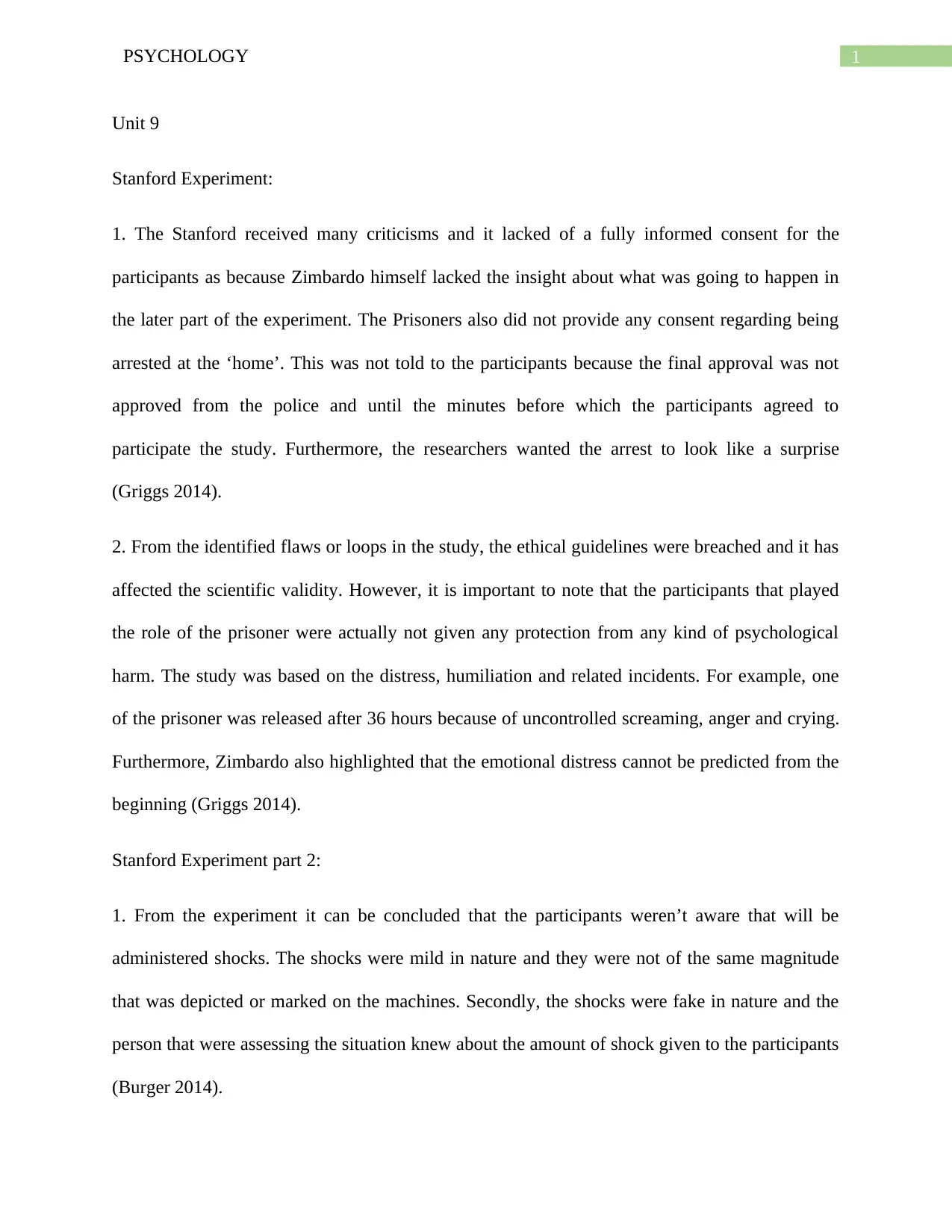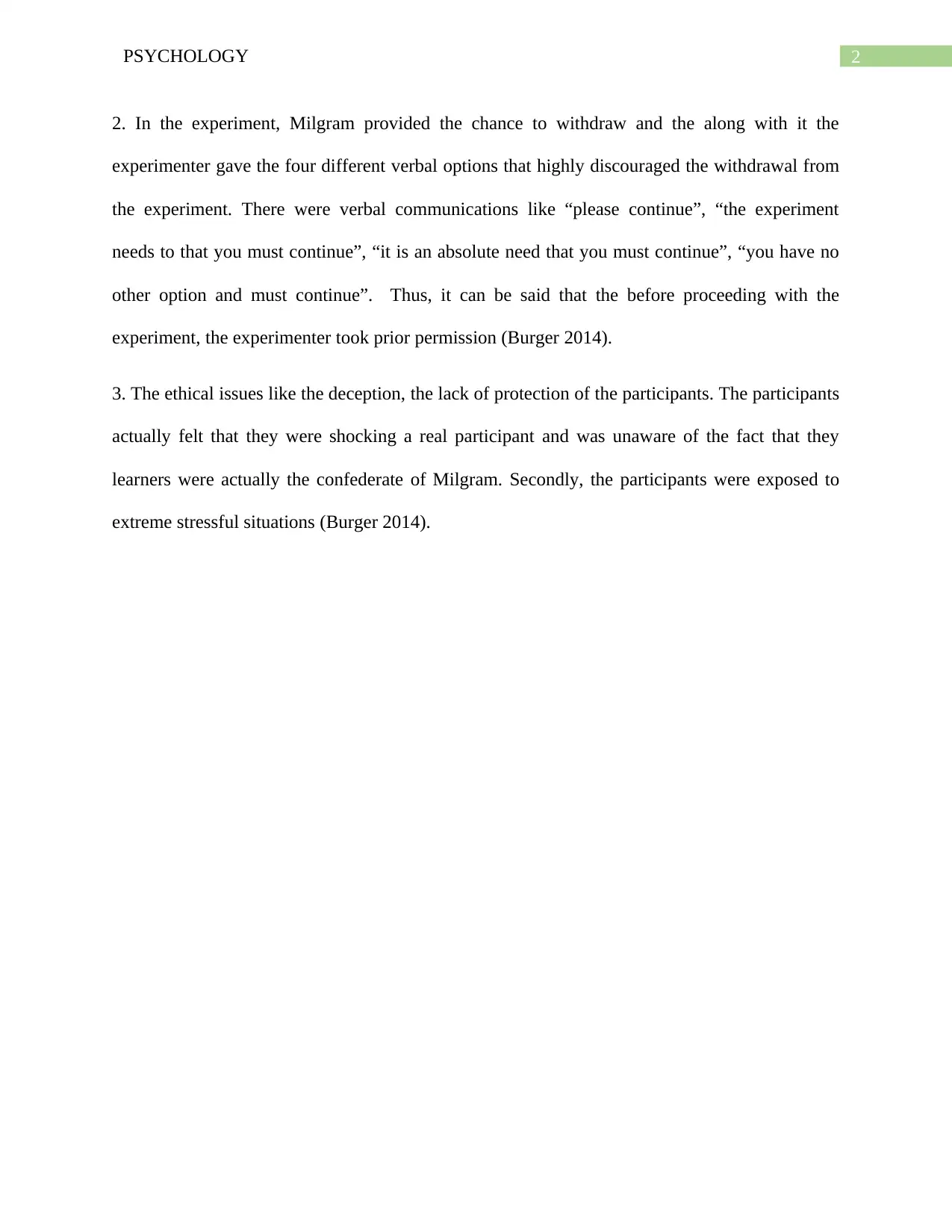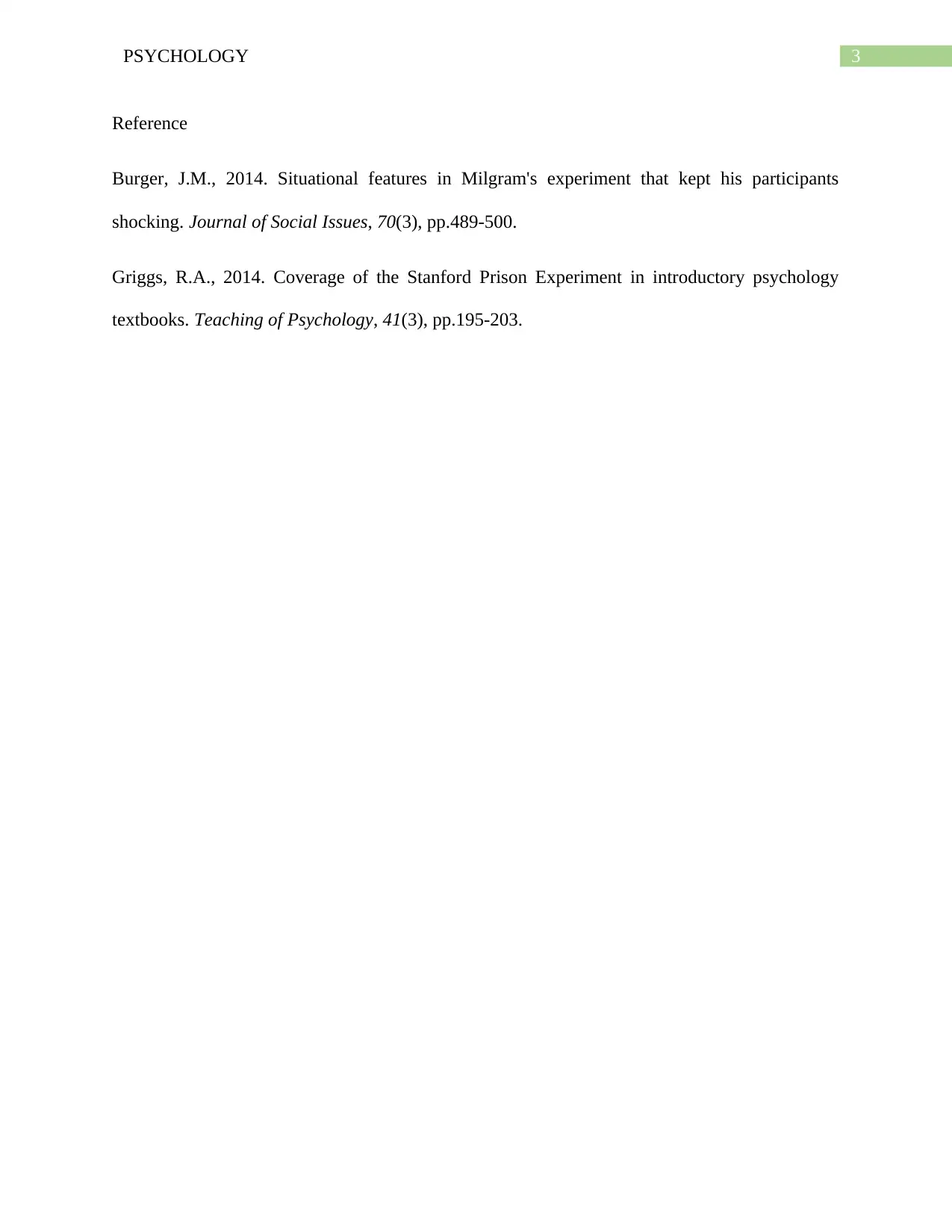Psychology Assignment: Ethical Issues in Stanford and Milgram Studies
VerifiedAdded on 2023/04/22
|4
|543
|475
Report
AI Summary
This report critically analyzes the Stanford Prison Experiment and the Milgram Experiment, focusing on ethical issues, research methodologies, and participant treatment. The Stanford Prison Experiment's ethical concerns include lack of informed consent and potential psychological harm to participants. The Milgram Experiment's ethical challenges involve deception, potential psychological distress, and the experimenter's influence. The report highlights the criticisms, situational features, and implications of these studies, along with the references from the assignment brief. The analysis encompasses the potential for psychological harm, the role of deception, and the impact of the experiments on the field of psychology. The document explores the ethical considerations surrounding the experiments, the researchers' approaches, and the overall influence of the studies.
1 out of 4






![[object Object]](/_next/static/media/star-bottom.7253800d.svg)